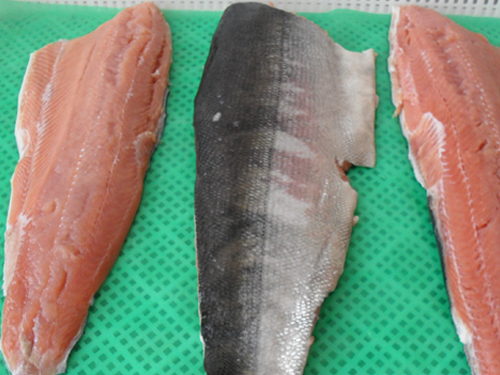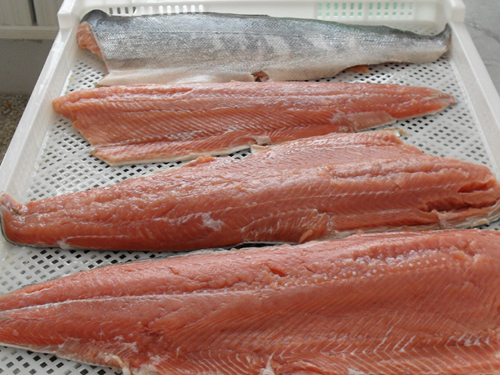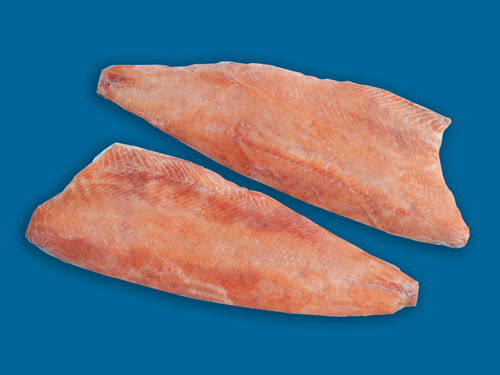- Salmon Fillet
-
- Name: Salmon Fillet
- Product ID:
- Place of Origin: Alaska
- Process: IQF
- MOQ: 20MT
- Package: 40 lb/carton
- Payment Terms: L/C, T/T
- Delivery Terms: Fob Dalian, CIF


Next: Wild Alaska Salmon Fillets in Package
Salmon Fillet Raw Material


Detailed Product Description
Salmon is a popular food. Classified as an "oily fish", salmon is considered to be healthy due to the fish's high protein, high Omega-3 fatty acids, and high vitamin D[10] content. Salmon is also a source of cholesterol, ranging 23–214 mg/100g depending on the species. According to reports in the journal Science, however, farmed salmon may contain high levels of dioxins. PCB (polychlorinated biphenyl) levels may be up to eight times higher in farmed salmon than in wild salmon. Omega-3 content may also be lower than in wild caught specimens, and in a different proportion to what is found naturally. Omega 3 comes in three types, ALA, DHA and EPA; wild salmon has traditionally been an important source of DHA and EPA, which are important for brain function and structure, among other things. This means that if the farmed salmon is fed on a meal which is partially grain then the amount of Omega 3 it contains will be present as ALA (alpha-linolenic acid). The body can itself convert ALA Omega 3 into DHA and EPA, but at a very inefficient rate (2–15%). Nonetheless, according to a 2006 study published in the Journal of the American Medical Association, the benefits of eating even farmed salmon still outweigh any risks imposed by contaminants . Type of Omega 3 present may not be a factor for other important health functions. A simple rule of thumb is that the vast majority of Atlantic salmon available on the world market are farmed (greater than 99%), whereas the majority of Pacific salmon are wild-caught (greater than 80%). Farmed Atlantic salmon outnumber wild Atlantic salmon 85 to 1.
Send Online Inuiry
- Related Products



 Original Image
Original Image
